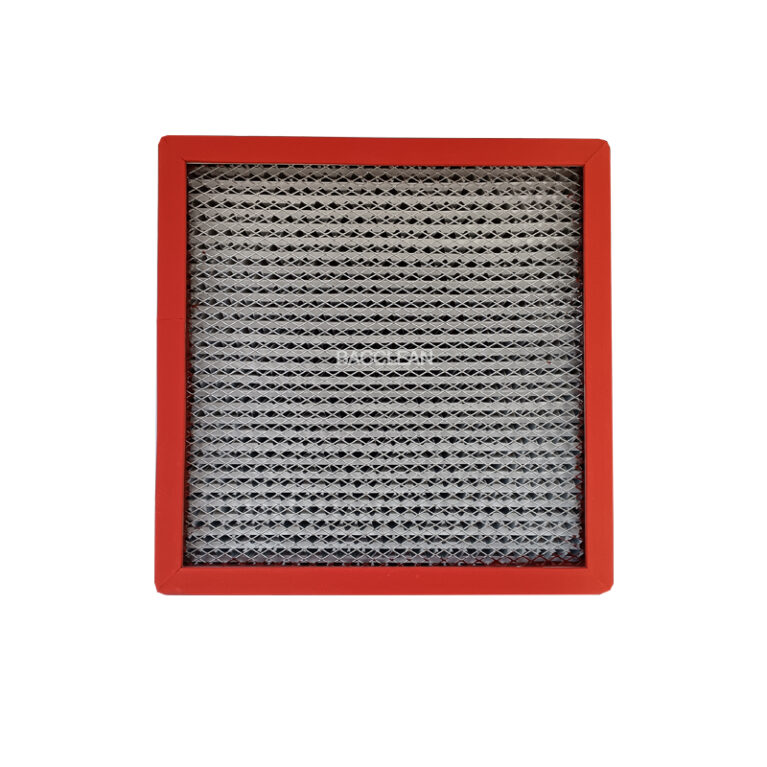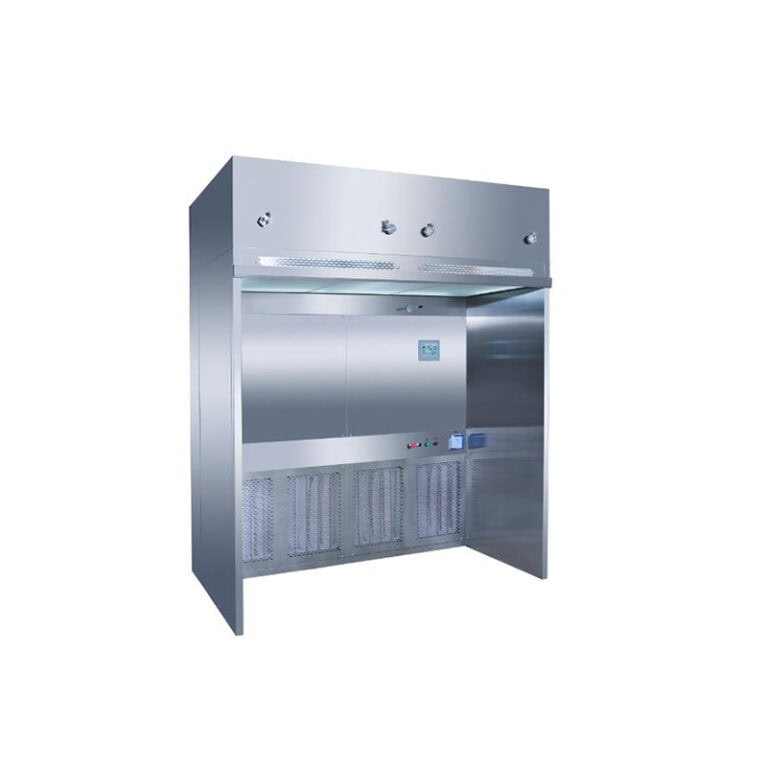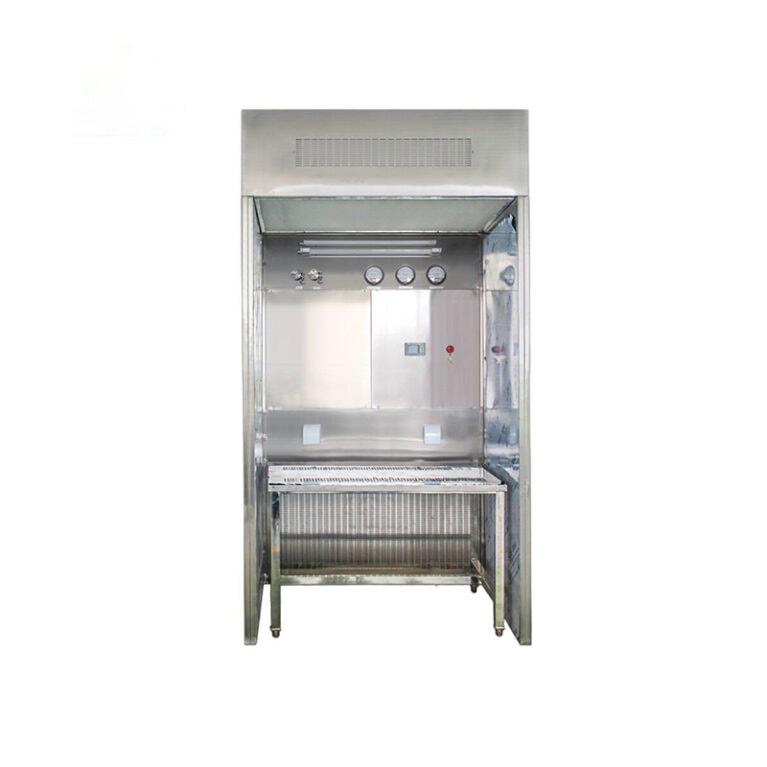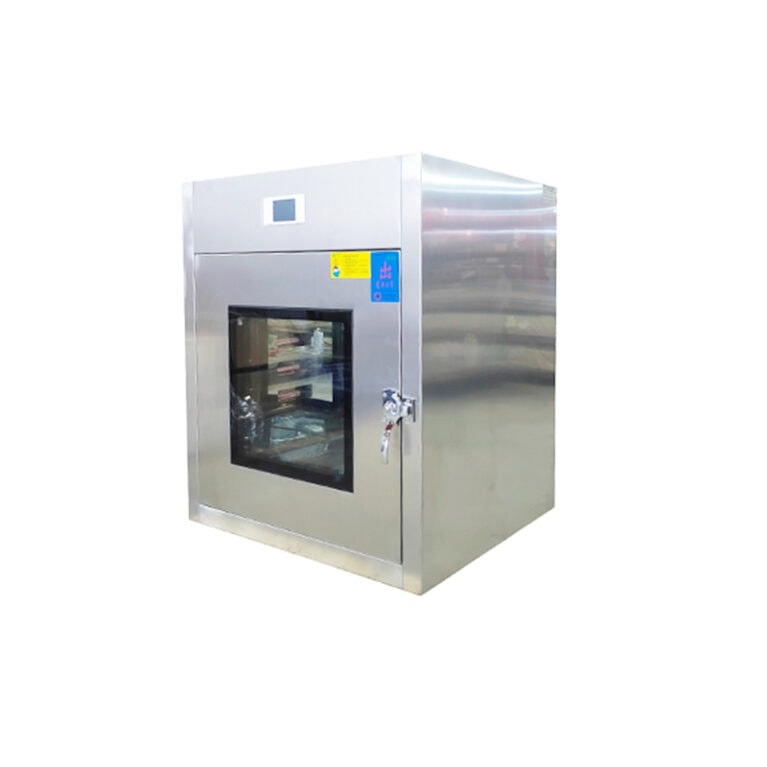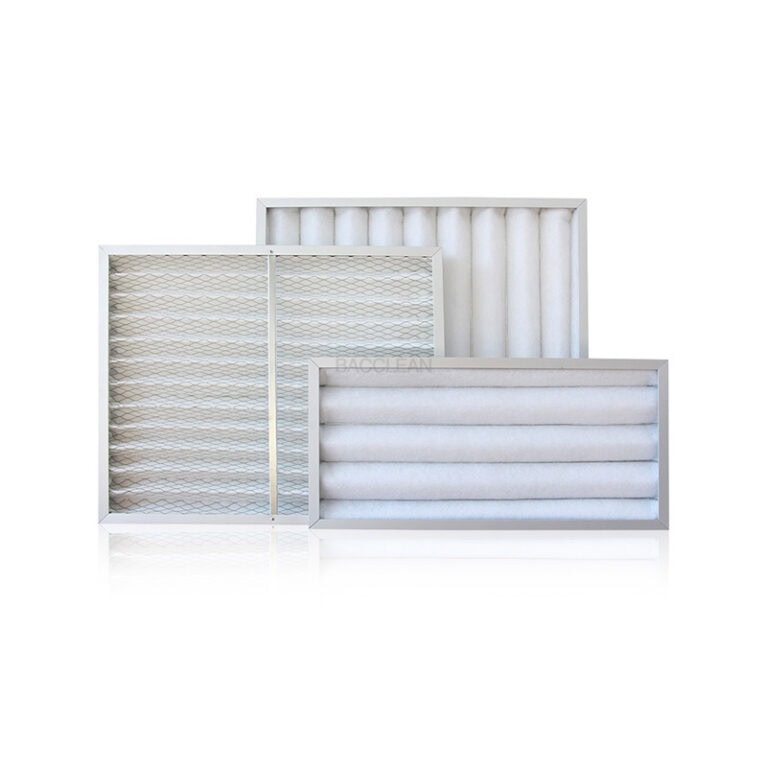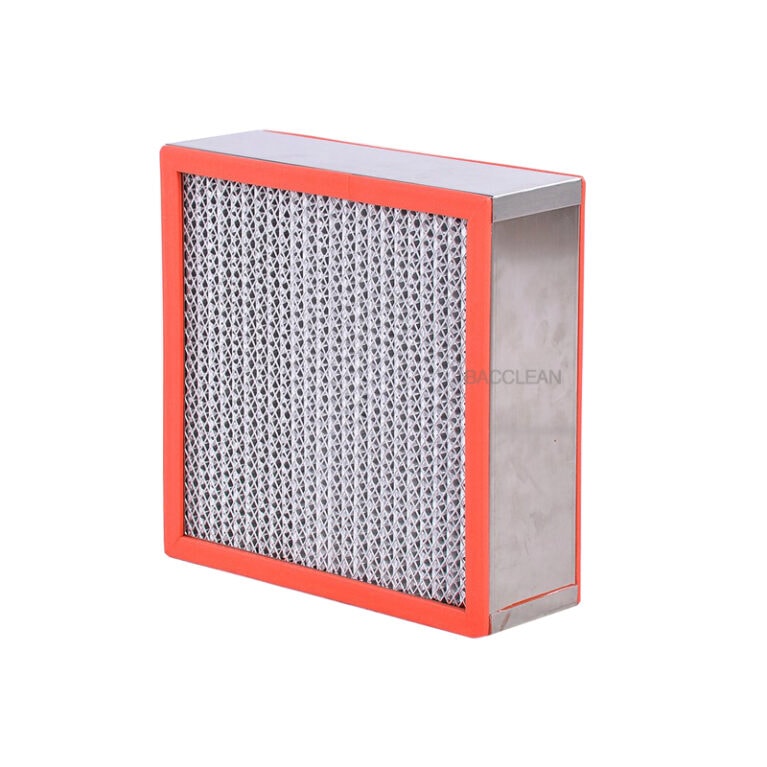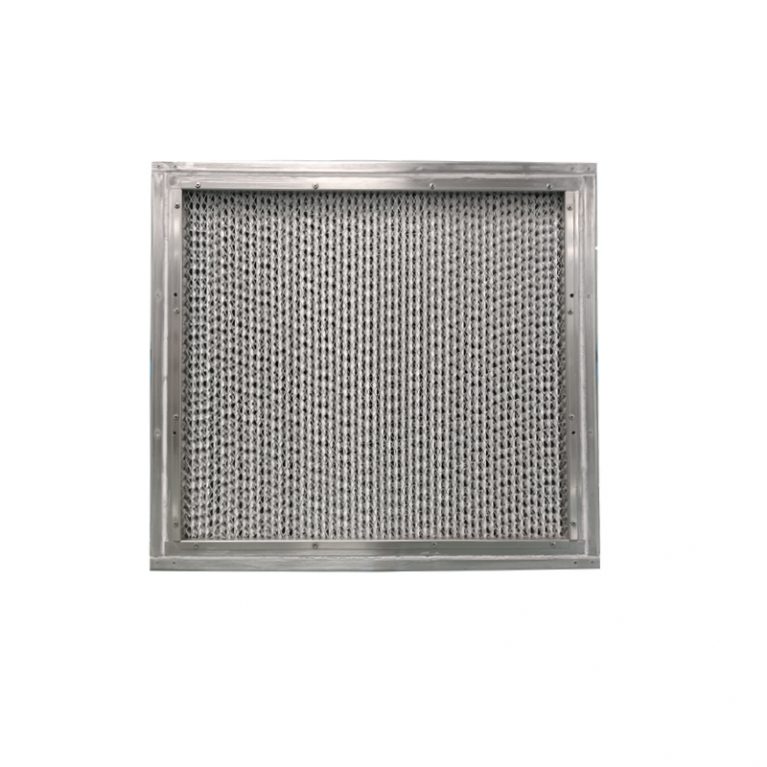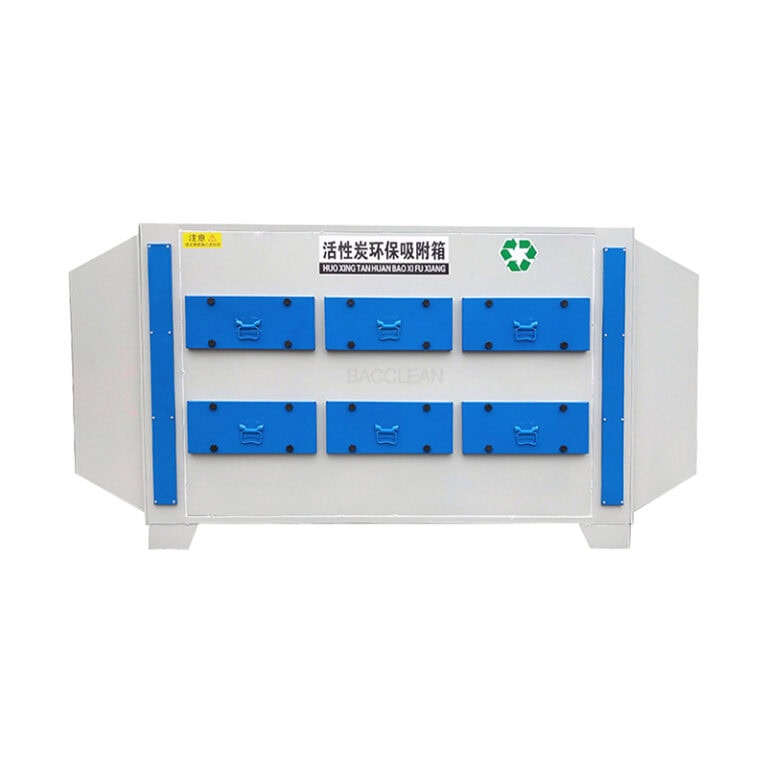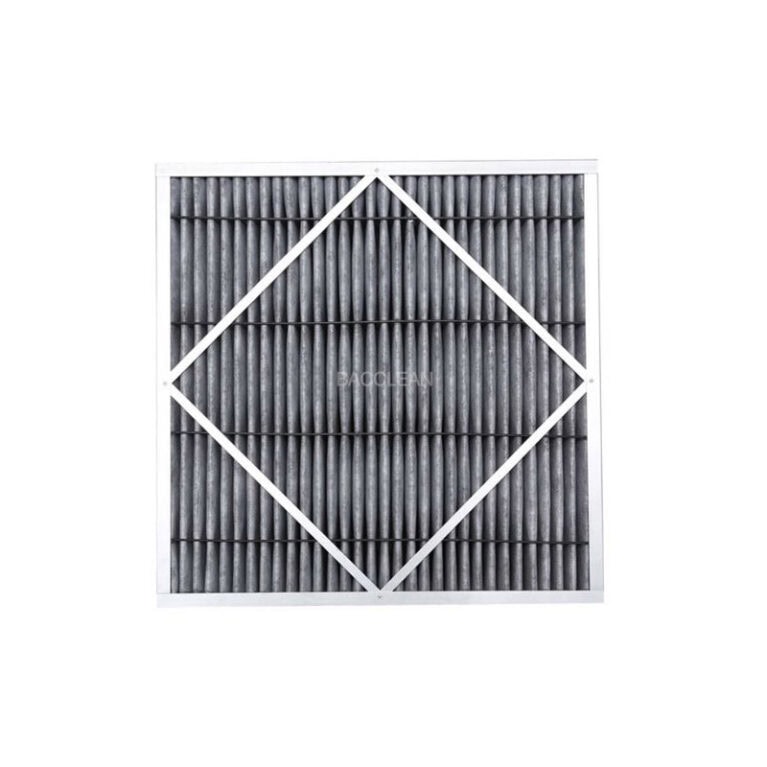To determine whether a plastic frame combined air filter needs to be replaced, it is necessary to comprehensively judge through methods such as resistance monitoring, appearance inspection, and performance testing based on its operating status, performance changes, and actual filtration effect. The specific methods are as follows:
I. Judging through Resistance Changes (Core Indicator)
The resistance of the filter will gradually increase as the dust holding capacity rises. When the resistance reaches the preset “final resistance”, it indicates that the filter material is close to saturation and must be replaced.
Initial resistance: The resistance of the filter when it is not in use (product manuals usually indicate this, for example, the initial resistance of medium-efficiency filters is approximately 50-80Pa, and that of high-efficiency filters is about 100-200Pa).
Final resistance: Generally set at 2 to 3 times the initial resistance (it can be determined according to the system design. For example, for a filter with an initial resistance of 80Pa, it needs to be replaced when the final resistance reaches 160 to 240Pa).
Operation method: Install differential pressure gauges before and after the filter, and record the resistance changes regularly. When the value reaches the final resistance, it is the signal to replace.
Ii. Judgment through Visual Inspection (Intuitive Method)
Regularly disassemble the outer frame of the filter to observe the condition of the filter material. Replacement is required when the following situations occur:
Obvious contamination of the filter material: The surface of the filter material turns black, accumulates severe dust, and even has oil stains, water stains, etc. (especially in scenarios with severe pollution such as industrial workshops and kitchens).
Filter material damage or deformation: If the filter material is torn, has holes, wrinkles or collapses, unfiltered air will directly penetrate, losing its filtering effect.
Seal failure: The sealing gasket between the filter and the frame ages, falls off, or the frame deforms, causing air to leak through the gap (which can be assisted by smoke testing for detection).
Iii. Judgment through Filtration Effect Testing (Precise Method)
For scenarios with high cleanliness requirements (such as hospital operating rooms and electronic clean workshops), the quality of the filtered air needs to be tested by professional equipment to determine whether to replace it
Particle counter detection: At the air outlet of the filter, measure the concentration of particulate matter in the air (such as the number of 0.3μm and 5μm particles). If the concentration exceeds the design standard (for example, the cleanroom Class 100 requires that the number of particles ≥0.5μm per cubic foot be ≤100), it indicates that the filter has failed and needs to be replaced.
Wind speed uniformity test: If the local wind speed of the filter is abnormal (for example, the wind speed in one area is significantly higher than that in other areas), it may be due to local blockage or damage of the filter material, causing a short circuit in the airflow. Inspection and replacement are required.
Iv. Judgment Based on Usage Environment and Experience (Supplementary Reference)
In scenarios where professional equipment is lacking, the degree of pollution in the usage environment and the experience cycle can be combined for judgment:
High-pollution environments (such as construction sites, cement plants, and textile workshops) : Even if the resistance has not reached the final resistance, if the usage time is approaching the empirical life of the scenario (such as 1-2 months for the initial effect and within 1 month for the medium effect), it is recommended to check and replace it in advance.
Clean environments (such as offices and general hospital wards) : The inspection cycle can be appropriately extended, but it is necessary to avoid exceeding the maximum usage time recommended in the product manual (generally no more than 12 months, and no more than 6 months for high-efficiency filters).
الملخص
To determine whether a plastic frame combined air filter needs to be replaced, the core basis should be to prioritize the resistance reaching the final resistance, supplemented by visual inspection and filtration effect testing. For scenarios with high cleanliness requirements, it is necessary to combine professional equipment for detection. In ordinary scenarios, a comprehensive judgment can be made based on resistance and appearance to avoid filter failure or increased system energy consumption due to excessive use.
I. Judging through Resistance Changes (Core Indicator)
The resistance of the filter will gradually increase as the dust holding capacity rises. When the resistance reaches the preset “final resistance”, it indicates that the filter material is close to saturation and must be replaced.
Initial resistance: The resistance of the filter when it is not in use (product manuals usually indicate this, for example, the initial resistance of medium-efficiency filters is approximately 50-80Pa, and that of high-efficiency filters is about 100-200Pa).
Final resistance: Generally set at 2 to 3 times the initial resistance (it can be determined according to the system design. For example, for a filter with an initial resistance of 80Pa, it needs to be replaced when the final resistance reaches 160 to 240Pa).
Operation method: Install differential pressure gauges before and after the filter, and record the resistance changes regularly. When the value reaches the final resistance, it is the signal to replace.
Ii. Judgment through Visual Inspection (Intuitive Method)
Regularly disassemble the outer frame of the filter to observe the condition of the filter material. Replacement is required when the following situations occur:
Obvious contamination of the filter material: The surface of the filter material turns black, accumulates severe dust, and even has oil stains, water stains, etc. (especially in scenarios with severe pollution such as industrial workshops and kitchens).
Filter material damage or deformation: If the filter material is torn, has holes, wrinkles or collapses, unfiltered air will directly penetrate, losing its filtering effect.
Seal failure: The sealing gasket between the filter and the frame ages, falls off, or the frame deforms, causing air to leak through the gap (which can be assisted by smoke testing for detection).
Iii. Judgment through Filtration Effect Testing (Precise Method)
For scenarios with high cleanliness requirements (such as hospital operating rooms and electronic clean workshops), the quality of the filtered air needs to be tested by professional equipment to determine whether to replace it
Particle counter detection: At the air outlet of the filter, measure the concentration of particulate matter in the air (such as the number of 0.3μm and 5μm particles). If the concentration exceeds the design standard (for example, the cleanroom Class 100 requires that the number of particles ≥0.5μm per cubic foot be ≤100), it indicates that the filter has failed and needs to be replaced.
Wind speed uniformity test: If the local wind speed of the filter is abnormal (for example, the wind speed in one area is significantly higher than that in other areas), it may be due to local blockage or damage of the filter material, causing a short circuit in the airflow. Inspection and replacement are required.
Iv. Judgment Based on Usage Environment and Experience (Supplementary Reference)
In scenarios where professional equipment is lacking, the degree of pollution in the usage environment and the experience cycle can be combined for judgment:
High-pollution environments (such as construction sites, cement plants, and textile workshops) : Even if the resistance has not reached the final resistance, if the usage time is approaching the empirical life of the scenario (such as 1-2 months for the initial effect and within 1 month for the medium effect), it is recommended to check and replace it in advance.
Clean environments (such as offices and general hospital wards) : The inspection cycle can be appropriately extended, but it is necessary to avoid exceeding the maximum usage time recommended in the product manual (generally no more than 12 months, and no more than 6 months for high-efficiency filters).
الملخص
To determine whether a plastic frame combined air filter needs to be replaced, the core basis should be to prioritize the resistance reaching the final resistance, supplemented by visual inspection and filtration effect testing. For scenarios with high cleanliness requirements, it is necessary to combine professional equipment for detection. In ordinary scenarios, a comprehensive judgment can be made based on resistance and appearance to avoid filter failure or increased system energy consumption due to excessive use.

